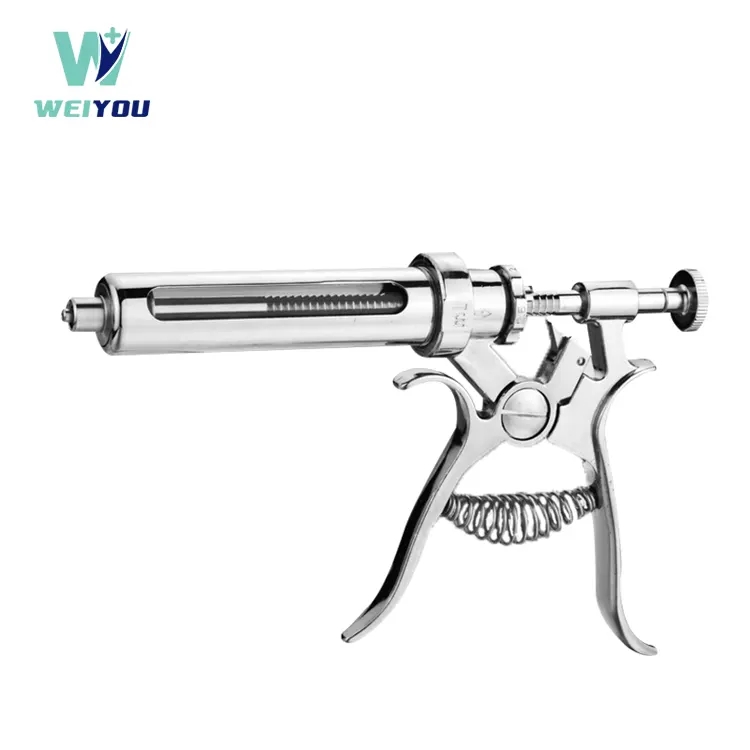Key Points about Veterinary Syringe
2023-10-18
A veterinary syringe is a medical instrument used by veterinarians to administer medications, vaccines, or other substances to animals. Here are some key points to consider about veterinary syringes:
1. Purpose: Veterinary syringes are designed to accurately measure and deliver specific doses of medications, vaccines, or other fluids to animals. They are essential tools in veterinary medicine for ensuring proper dosing and treatment.
2. Types of Syringes:
- Disposable Syringes: These are single-use syringes made of plastic, often pre-filled with a specific medication or vaccine dose. After use, they are disposed of, minimizing the risk of cross-contamination.
- Reusable Syringes: These syringes can be sterilized and used multiple times. They are often made of metal or durable plastic. Reusable syringes are common in situations where specific dosages need to be prepared or where multiple doses are given to various animals.
3. Components:
- Barrel: The main body of the syringe where the medication is held. It's marked with volume measurements for accurate dosing.
- Plunger: The movable part inside the barrel that pushes the medication out when pressed.
- Needle: The thin, pointed tube that attaches to the syringe and delivers the medication into the animal's body. Needles vary in length and gauge (diameter), depending on the type of injection and the size of the animal.
4. Dosing Accuracy: Veterinary syringes come in various sizes with precise volume measurements to ensure accurate dosing based on the animal's weight and the specific medication being administered. It's crucial to select the appropriate syringe size for the intended purpose.
5. Injection Types:
- Intramuscular (IM) Injections: The needle is inserted into the muscle tissue to deliver medications directly into the bloodstream.
- Subcutaneous (SC) Injections: The needle is inserted beneath the skin into the subcutaneous tissue. This method is commonly used for vaccines and some medications.
- Intravenous (IV) Injections: Administered directly into a vein for rapid medication delivery. IV injections require more specialized equipment and training.
6. Animal Comfort and Safety: Proper needle size and injection technique are important to minimize discomfort and ensure the animal's safety. Veterinarians must consider the animal's size, age, and temperament when selecting syringe size and injection method.
7. Hygiene and Sterilization: Both disposable and reusable syringes must be kept clean and sterile to prevent infections. Proper hygiene practices are crucial to avoid contamination and cross-transmission of diseases.
8. Storage: Veterinary syringes and needles should be stored in a clean, dry, and protected environment to maintain their sterility and functionality.
9. Regulations: Veterinary syringes and needles should meet certain standards and regulations to ensure their safety and effectiveness. Different regions might have specific requirements for veterinary equipment.
10. Training: Proper training is essential for veterinarians and veterinary staff to use syringes correctly and safely. Improper administration of medications can lead to adverse reactions or treatment failure.
Remember that veterinary practices and equipment can evolve over time, so it's a good idea to consult with current veterinary sources or professionals for the most up-to-date information on veterinary syringes and their use.



